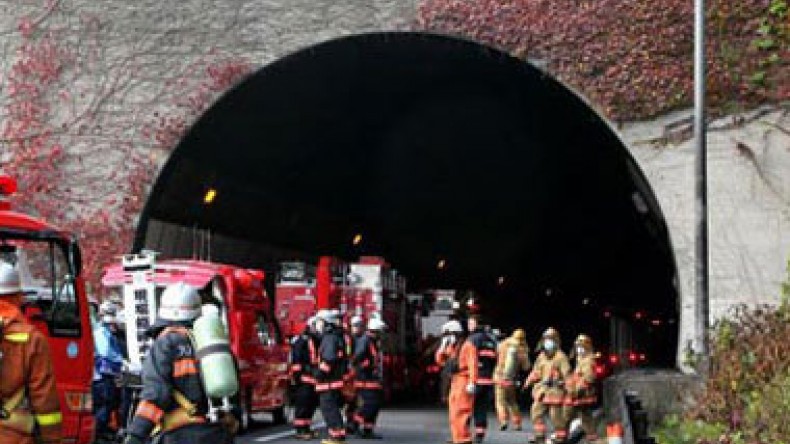
Bolts may be behind Japan tunnel collapse
The mangled wrecks of cars being carried out of Japan's Sasago Tunnel suggest there was little motorists could do to escape the sudden collapse of the ceiling above them, CNN reported.
A day after the disaster, one main theory has emerged as to what caused the collapse, which killed nine people who were trapped in their cars by rubble or the flames that broke out shortly after.
At a press briefing on Monday, the executive officer of the tunnel's operator said it appeared that some "anchor bolts" used to secure concrete slabs to the tunnel ceiling were missing.
"There were parts of concrete (slabs) where bolts had fallen off," Ryoichi Yoshizawa said, according to a spokesman for Central Japan Expressway Company or NEXCO-Central.
"The aging of the bolts or the concrete slabs could be a potential cause (of the collapse)," Yoshizawa said. He did not say how many bolts were found to be missing or how they came to be loose.
Yoshizawa added that while regular checks had been performed on the tunnel, they were visual checks and there was no physical testing.
Emergency inspections have been ordered on 49 tunnels across the country with the same ceiling structure, according to the Ministry of Land, Infrastructure, Transport and Tourism.
There are 1,575 highways tunnels in Japan and around a quarter of those are more than 30 years old, including the Sasago Tunnel which opened in 1977, the ministry said.
The tunnel's ceiling gave way on Sunday morning at around 8 a.m. local time. Witnesses recalled the horror of smoke filling up the tunnel as huge concrete slabs rained down on traffic below. Japanese highway police said Monday the section of concrete that fell was 110 meters (360 feet) long.
Charred bodies were pulled from the debris, including five from a single station wagon. Three others were in a burned vehicle, according to a police spokesperson, while another body was found in a truck.
"It was terrifying. I don't think I could ever drive through the tunnel again," one shaken survivor told TV Asahi, as black and white video released by NEXCO showed rescue workers in flashlight-topped helmets stepping over rubble.
Newsfeed
Videos






























